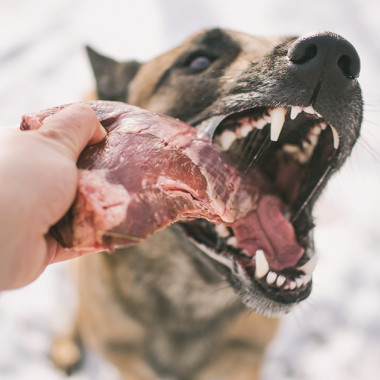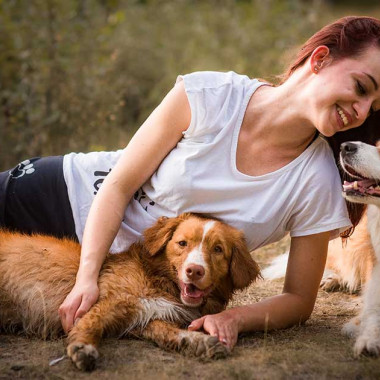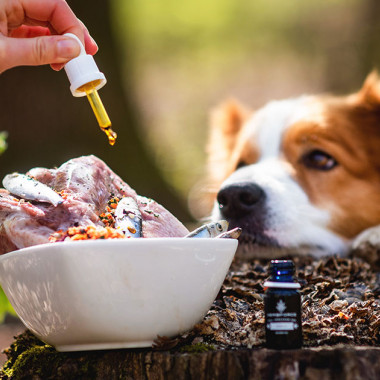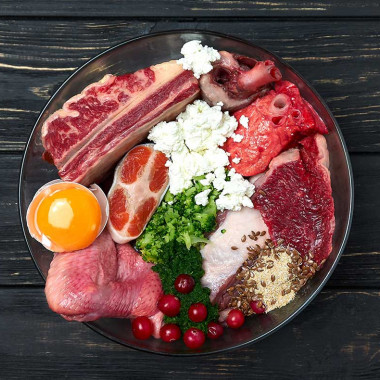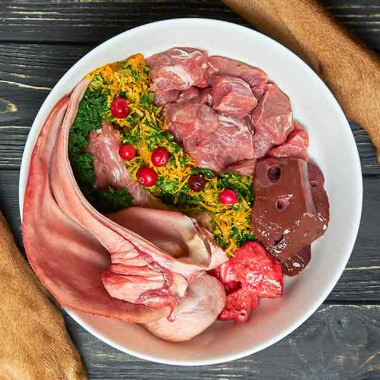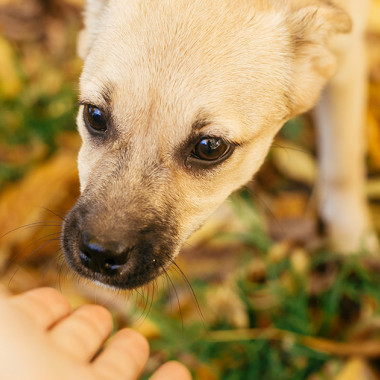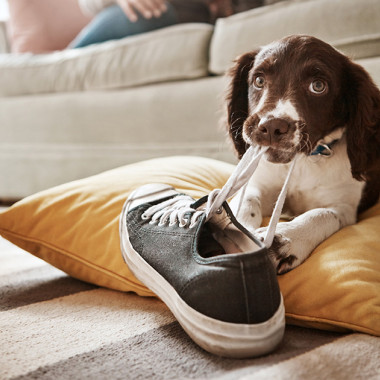Sports performance and nutrition go hand in hand. Without appropriate nutrients, athletic success can be at risk. Mental well-being is also essential, and it can be ensured by proper nutrition and hydration. Timing is important, as no one moves comfortably with a full stomach. Furthermore, proper hydration and feeding ensure the dog’s proper health, which should be the top priority for every dog owner.
Hydration – Keeping the Dog Hydrated
Water is the most essential substance for any organism. Whether it's a dog in active performance or a couch companion, every dog should have access to drinking water 24 hours a day. For a 20 kg dog, the daily requirement is about 1000 ml of fluids. Dogs naturally consume water through their food, so if you notice a decrease in water intake after switching to raw food, there’s no need for concern. However, when the dog is under physical strain or preparing for a performance, active hydration becomes necessary. It’s up to the handler to ensure that the dog drinks the required amount of water at the right time. Animals don’t plan ahead and can’t anticipate what’s coming, but we can, and it’s in the interest of maintaining the dog’s health to act accordingly.
Why is Hydration Important?
Keeping the dog hydrated helps with thermoregulation, which in turn improves the dog’s mental state. A well-hydrated dog will be more eager to work, even on warmer days. Metabolism works more efficiently, improving performance. Dehydration can also lead to muscle cramps, which can be prevented by maintaining proper hydration, protecting the dog from unnecessary pain and discomfort.
A 5% loss of fluids results in reduced skin elasticity, increased risk of cramps, and weaker thermoregulation. Such dehydration is still considered mild, and its symptoms are difficult to notice. However, with a loss of 10% to 12% of fluids, the dog’s mucous membranes become extremely dry, skin elasticity is significantly reduced, and the eyes become sunken. This is a serious condition that is easy to notice, and if it progresses, the dog can go into shock, which is life-threatening. Such a condition should never occur during a sporting event.
How to Hydrate?
You can't exactly train a dog to drink water on command. The dog might learn to drink on cue, but you can’t force it to drink the necessary amount. Therefore, motivation is key. You can encourage the dog to drink by flavoring the water to make it more appealing. This can be done by adding food, oils, or specialized supplements that also provide additional nutrients and energy.
You can simply use a teaspoon of any ground raw meat from our products and mix it into the water. It’s important to find what works best for your dog. You can be creative with this, but be careful not to overdo the amount of food so as not to burden digestion with too much solid matter. There are also supplements available on the market that support performance or aid in recovery after exercise.
When and How Much Water Does a Dog Need?
Fluid intake is crucial both before and after exercise. It’s best to offer flavored water two to three hours before the start of activity. After the activity, the dog will decide when and how much to drink, so make sure water is available immediately after the event. It’s important to prevent the dog from drinking too much too quickly, and ideally wait until the dog has caught its breath. The amount of fluids needed before activity depends on the dog’s weight. The animal should receive about 15 ml of fluids per kilogram of body weight.
Sometimes we might forget or run out of time. It’s always better to offer water even an hour before exercise rather than not at all. Even if the amount of fluids is reduced, it’s still beneficial for the dog. If you realize that you haven’t had time to hydrate the dog until less than an hour before the activity, it’s better not to give any water. Always monitor the signs during the activity, and if anything seems off, it’s best to stop and avoid overstraining the dog. After all, nothing is more important than the dog’s health.
What if you’re traveling with the dog on the day of planned activity and there’s no time for hydration? In such cases, you can hydrate the dog the day before, so the dog will remain hydrated even during the trip, which is also very important. For better recovery after performance, the same hydration method can be used, but with a reduced amount of fluids, and given at least half an hour after the end of the activity.
When to Feed?
When it comes to activities, timing is as important as the nutrients. The time and amount of feeding depend on the type of activity. For better understanding, let’s compare two extremes. In sprint events, like greyhound racing, there’s no significant need to change the amount or composition of food, so the timing of feeding before the event isn’t as critical. On the other hand, in long-lasting activities like sledding, where the dog is physically active for over five hours, feeding must be planned in advance. The food must be adjusted in terms of nutrient content, as well as feeding frequency and portion size. The portions become smaller and are offered more frequently throughout the day, while the overall daily intake is higher in energy compared to the off-season. If the dog is active for more than four hours, you’ll need to replenish nutrients during the activity and take breaks for snacks. The best supplement for long-lasting activity is fat, like beef fat.
For regular sports that last up to an hour, it’s recommended to feed the dog at least two hours before the start. Ideally, the dog should have a break of two hours or more between its last meal and the physical activity. If these rules are not followed, life-threatening complications such as stomach torsion can occur.
Regardless of the motivation, health should always come first. Preparing a dog for performance requires several days of proper training, and equally important is proper feeding and hydration.

